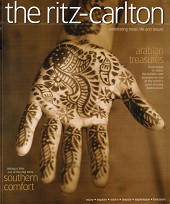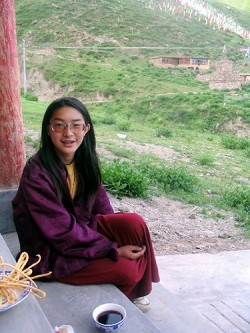The Literate Traveler
Keeping a travel journal is a way to chronicle and relive your adventures, from the sublime to the ridiculous
by Rolf Potts
These days, digital photos and travel blogs seem to be the most fashionable way of documenting one's travels, but a pen-and-paper travel journal need not be considered an outdated medium. Curious to know more about perfecting this time-honored art form, I called to seek advice from Utah-based writer and travel journal guru Lavinia Spalding, who is currently at work on a book titled Writing Away: A Guide to Awakening the Journal-Writing Traveler.
Spalding reminds us there's no single method and motivation for keeping a travel journal. "Every traveler who keeps a journal does so for different and valuable reasons," she says. "On the most basic level, a travelogue is a place to record information—the name of that historic hotel in Livingston, Mont., or directions to the best Khmer restaurant in Siem Reap, Cambodia. It's a log of what not to forget. It can inspire writing to publish, or share with friends and family; serve as a confidant on solo journeys; store memorabilia such as stamps, ticket stubs and wine labels; or provide a clean canvas for impromptu sketches. It can be a mirror of self-discovery along the way. For me, the ultimate reward is being forced, regularly, to slow down and be present. If I sit with my notebook for even a few minutes each day to write about where I am in that moment, and what I'm currently experiencing with all of my senses, it becomes a practice. It takes me out of thinking only of past and future—the site I've just visited, or my next destination. It demands an immediate stillness and awareness, and in doing so enriches the whole experience."
In Windblown World, many of Kerouac's most compelling entries come before he ever leaves New York, when he is studying up on the history of Montana in a public library, or daydreaming about working on a ranch in Colorado—and Spalding notes that these kind of pre-trip musings are a great way to break in a new travel journal. "Before you leave, begin by listing expectations and goals for the journey, as well as any preconceived notions of your intended destinations. Include your to-do list, packing list, estimated budget and any useful travel tips you've received. Not only will this spark excitement and get you into the habit of journal writing, you'll also have fun reading it upon your return, at which point you can recount the ways in which your expectations met or differed from reality."
Once on the road, Spalding says, the challenge in keeping a travel journal is to stay disciplined without overdoing it. "A mistake many people make is trying to describe in exhaustive detail the events of every single day. If you make yourself write daily long entries, eventually it'll start to smell like homework. Some consistency is necessary, though. Its a good idea to commit to eking out a few words every day—short notes on where you went and what you saw, or a funny overheard quote. Entries in my journal from Tibet are as brief as "steaming plates of yak momos," and in my Mexico journal, "The lady renting us the casita has a shiny gold star on her front tooth." A few words are enough to solidify memories. Maybe later you'll expand on what you've written. Maybe not. Either way, you've managed to include the journal in your experience without allowing it to take over."
DETAILS TELL THE STORY
A great example of using a single detail to expand on a given travel situation comes from the journal of British traveler Mary Kingsley, who uses the road itself to describe a scene in West Africa: Not all of us can aspire to the succinct eloquence of Kingsley, of course, so Spalding recommends variety as a way of keeping your journal interesting. "If you've been writing only lengthy, descriptive entries and are starting to bore yourself," she says, "try for one day writing nothing but haikus. Or country songs and limericks. I also rely heavily on lists. A running top 10 of unbelievable meals, weird sights, funny quotes and badly translated English signs will keep you returning to your notebook even when you're not in the mood to write. If your journal leans toward the artistic, the same goes: Take a break from sketching scenes for a while to draw lighthearted cartoons, or make a lovely collage of stamps, sugar packets, money and paper chopstick sleeves."
It is, I should say, as broad as Oxford Street; on either side of it are deep drains to carry off the surface waters, with banks of varied beautiful tropical shrubs and ferns, behind which rise, 100 to 200 feet high, walls of grand forest, the column-like tree-stems either hung with flowering, climbing plants and ferns, or showing soft red and soft grey shafts 60 to 70 feet high without an interrupting branch. Behind this again rise the lovely foothills of Mungo, high up against the sky, colored the most perfect soft dark blue. The whole scheme of color is inextricably rich and full in tone. The very earth is a velvety red brown, and the butterflies - which abound - show themselves off in the sunlight, in their canary-colored, crimson, and peacock-blue liveries, to perfection. After five minutes' experience of the road I envy those butterflies. I do not believe there is a more lovely road in this world, and besides, it it's a noble and enterprising thing of a government to go and make it, considering the climate and the country; but to get any genuine pleasure out of it, it is requisite to hover in a bird- or butterfly-like way, for all the truly awful things to walk on, that road, when I was on it, was the worst.
In the end, Spalding suggests you think of your journal as a travel companion. "Not a whiny or strict companion demanding your constant attention, but an affable, playful, ever-available friend who doesn't mind spending a lot of time locked in your hotel room. Then, as you go about your day, taking in sights and having adventures, keep it in the back of your mind, thinking to yourself, 'I can't wait to tell my journal this story.'"
"The important thing is to keep it exciting so you don't risk blowing your chance for a beautiful relationship."
-
Everything Has Changed, but Craft Still Matters
Travel writer extraordinaire Erin Van Rheenan interviewed me about editing The Best Women's Travel Writing for Brevity. This was extra fun for me, because Brevity is one of my favorite lit mags. It was such a pleasure talking to Erin about what it felt like . . .
-
Bowing to Elephants Podcast
I really enjoyed my conversation with author Mag Dimond on her new podcast, Bowing to Elephants. We covered all kinds of interesting subjects, starting with our shared name (thought she goes by Mag, she's a Lavinia, too) and meandering to journaling, travel . . .
-
Travel Writing World Podcast
I spent some time talking with Jeremy Bassetti from the Travel Writing World podcast the other day. We discussed the importance and value of reading travel accounts written by women, the art of editing an anthology, and getting lost in travel and in writing. . . .
-
Brevity Q&A
Erin Van Rheenen interviewed me about The Best Women's Travel Writing, Volume 12, for a craft essay in one of my favorite literary magazines, Brevity. When editor Lavinia Spalding started reading submissions for Volume 12 of The Best Women’s Travel Writing . . .
 Ritz-Carlton Magazine
Ritz-Carlton Magazine




